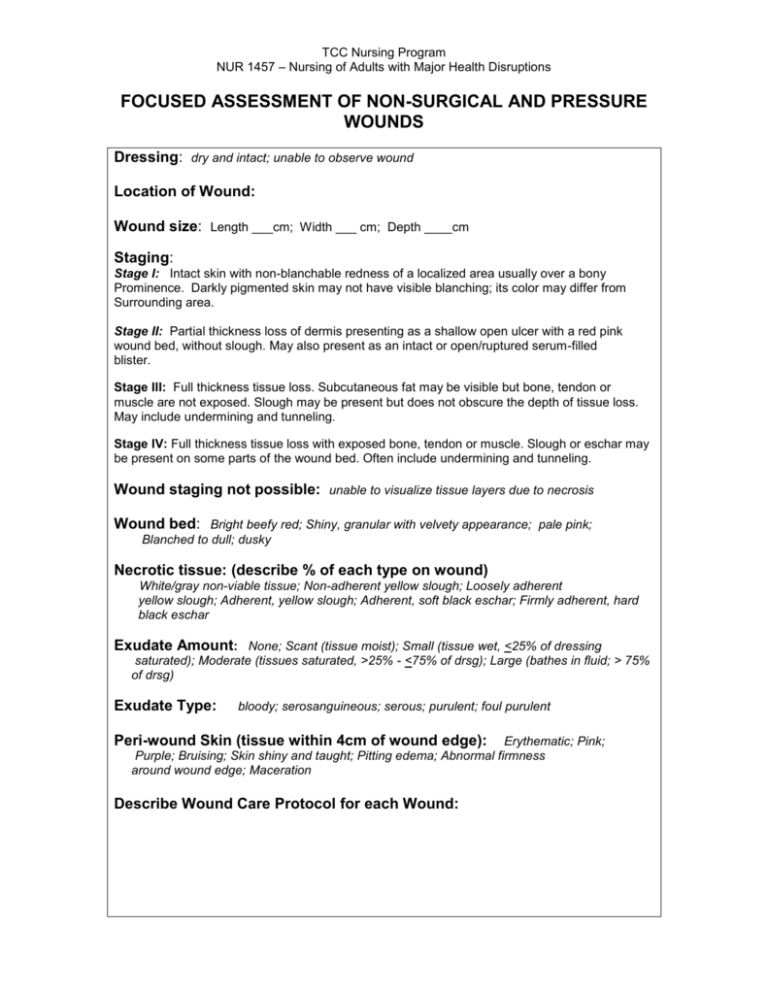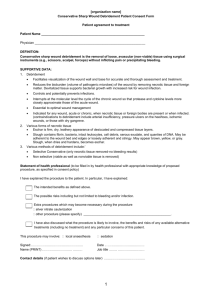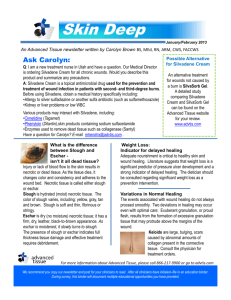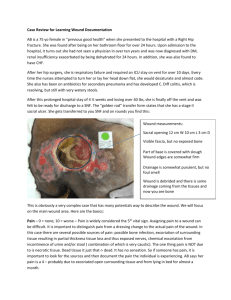NUR 1457 FocusAssessNon
advertisement

TCC Nursing Program NUR 1457 – Nursing of Adults with Major Health Disruptions FOCUSED ASSESSMENT OF NON-SURGICAL AND PRESSURE WOUNDS Dressing: dry and intact; unable to observe wound Location of Wound: Wound size: Length ___cm; Width ___ cm; Depth ____cm Staging: Stage I: Intact skin with non-blanchable redness of a localized area usually over a bony Prominence. Darkly pigmented skin may not have visible blanching; its color may differ from Surrounding area. Stage II: Partial thickness loss of dermis presenting as a shallow open ulcer with a red pink wound bed, without slough. May also present as an intact or open/ruptured serum-filled blister. Stage III: Full thickness tissue loss. Subcutaneous fat may be visible but bone, tendon or muscle are not exposed. Slough may be present but does not obscure the depth of tissue loss. May include undermining and tunneling. Stage IV: Full thickness tissue loss with exposed bone, tendon or muscle. Slough or eschar may be present on some parts of the wound bed. Often include undermining and tunneling. Wound staging not possible: unable to visualize tissue layers due to necrosis Wound bed: Bright beefy red; Shiny, granular with velvety appearance; pale pink; Blanched to dull; dusky Necrotic tissue: (describe % of each type on wound) White/gray non-viable tissue; Non-adherent yellow slough; Loosely adherent yellow slough; Adherent, yellow slough; Adherent, soft black eschar; Firmly adherent, hard black eschar Exudate Amount: None; Scant (tissue moist); Small (tissue wet, <25% of dressing saturated); Moderate (tissues saturated, >25% - <75% of drsg); Large (bathes in fluid; > 75% of drsg) Exudate Type: bloody; serosanguineous; serous; purulent; foul purulent Peri-wound Skin (tissue within 4cm of wound edge): Erythematic; Pink; Purple; Bruising; Skin shiny and taught; Pitting edema; Abnormal firmness around wound edge; Maceration Describe Wound Care Protocol for each Wound:





